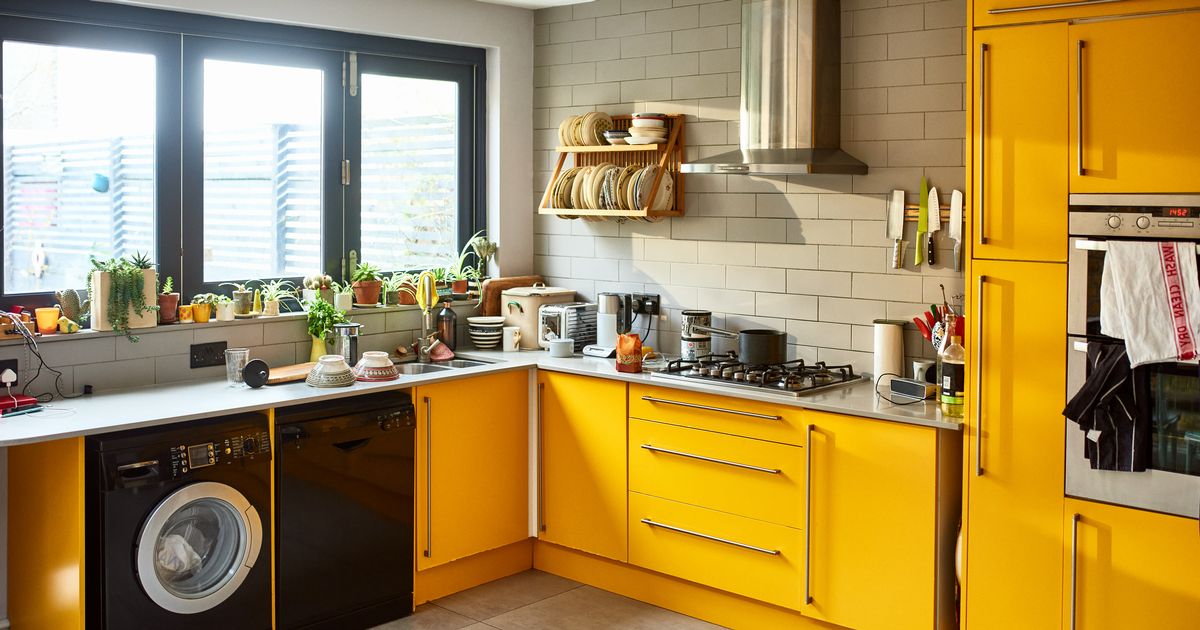Lifestyle
Brighten Your Home with Budget-Friendly Tips from Experts

Creating a bright and inviting home does not require extensive renovations or significant financial investment. Interior design expert Ryan McDonough from MyJobQuote offers several effective strategies to enhance natural light in your living spaces without breaking the bank. By making simple adjustments and understanding how light behaves, homeowners can transform even the darkest rooms into bright and airy environments.
Simple Painting Techniques
One of the most straightforward methods to increase light in your home is through paint. Choosing light and bright interior colors can significantly impact how natural light is reflected in your space. The Light Reflectance Value (LRV) measures how much light a color reflects, ranging from 100% for pure white to 0% for black. Painting walls and ceilings in lighter shades can help maximize this effect.
While bright white is the most effective choice, consider other light shades with subtle color tones to suit your preferences. Additionally, ceilings should ideally be painted white, as this color reflects light effectively. Opting for a matte finish rather than glossy can help reduce glare, creating a more comfortable environment.
Enhancing Reflection with Glossy Finishes
For those looking to amplify the light in their rooms, using high-gloss paints on walls is a beneficial strategy. Glossy finishes reflect more light than matte ones, creating a mirror-like effect that can brighten a space significantly. While some might prefer a matte look, incorporating gloss in darker rooms can lead to a noticeable increase in light.
In addition to walls, consider painting eaves or soffits—the overhanging parts of the roof—white. This simple adjustment can further enhance light reflection throughout your home, especially as these areas are often angled towards windows.
Utilizing Mirrors and Reflective Surfaces
Mirrors are one of the most effective tools for increasing light in a room. Positioned correctly, they can scatter natural light and create the illusion of a larger space. The ideal placement for a mirror is on a wall perpendicular to a window, as this will help distribute light more evenly across the room. Oversized mirrors are particularly effective, making a striking decorative addition while maximizing brightness.
Reflective surfaces, such as glass or metallic tiles, can also contribute to a lighter atmosphere. In kitchens and bathrooms, glass tiles reflect nearly 100% of incoming light, while glossy ceramic tiles offer similar benefits. A metallic splashback can serve both functional and aesthetic purposes, enhancing light while providing a trendy focal point.
Maximizing Window Potential
Windows serve as the primary source of natural light in a home. To ensure they function effectively, keep windowsills clear of clutter and avoid placing furniture or decor in front of them. This allows light to flow freely into the room.
When it comes to window coverings, choose lightweight materials that permit ample light. Sheer curtains can provide privacy while allowing natural light to filter through. Regularly cleaning windows inside and out is essential, as dirt and grime can reduce light entry significantly. A simple clean can make a surprising difference in the brightness of your home.
Furniture and Layout Considerations
The choice of furniture can also impact how light travels through a space. Opt for pieces with exposed legs to allow light to flow underneath or select lighter-colored furniture to enhance brightness. Avoid bulky items that may cast shadows or block light.
Decluttering is another effective method for brightening a room. Excess items absorb light and create visual noise, making a space feel smaller and darker. Regularly assess your belongings, and consider donating or discarding items that are no longer needed. Organizing remaining items into concealed storage solutions can create a cleaner, more open environment.
Outdoor Adjustments
Sometimes, the biggest obstacles to light come from outside. Overgrown trees or shrubs can block natural light from entering your home. If safe, consider trimming back any foliage that obstructs windows. This action can instantly increase the amount of light flooding your rooms.
Implementing these cost-effective strategies can dramatically enhance the brightness and overall atmosphere of your home. By understanding and working with light—using reflective paints, strategic furniture choices, and maintaining cleanliness—you can transform your living space into a more inviting and energetic environment without straining your budget. Embrace these tips and enjoy the glow of a brighter home.
-

 Top Stories3 months ago
Top Stories3 months agoTributes Surge for 9-Year-Old Leon Briody After Cancer Battle
-

 Entertainment4 months ago
Entertainment4 months agoAimee Osbourne Joins Family for Emotional Tribute to Ozzy
-

 Politics4 months ago
Politics4 months agoDanny Healy-Rae Considers Complaint After Altercation with Garda
-

 Top Stories4 months ago
Top Stories4 months agoIreland Enjoys Summer Heat as Hurricane Erin Approaches Atlantic
-

 World5 months ago
World5 months agoHawaii Commemorates 80 Years Since Hiroshima Bombing with Ceremony
-

 Top Stories3 months ago
Top Stories3 months agoNewcastle West Woman Patricia Foley Found Safe After Urgent Search
-

 Top Stories5 months ago
Top Stories5 months agoFianna Fáil TDs Urgently Consider Maire Geoghegan-Quinn for Presidency
-

 World5 months ago
World5 months agoCouple Convicted of Murdering Two-Year-Old Grandson in Wales
-

 World5 months ago
World5 months agoGaza Aid Distribution Tragedy: 20 Killed Amid Ongoing Violence
-

 World5 months ago
World5 months agoAristocrat Constance Marten and Partner Convicted of Infant Murder
-

 Top Stories4 months ago
Top Stories4 months agoClimbing Errigal: A Must-Do Summer Adventure in Donegal
-

 Top Stories4 months ago
Top Stories4 months agoHike Donegal’s Errigal Mountain NOW for Unforgettable Summer Views









